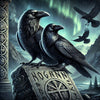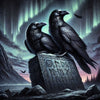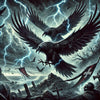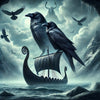What Can We Learn from Fenrir, the Legendary Wolf of Norse Myths?
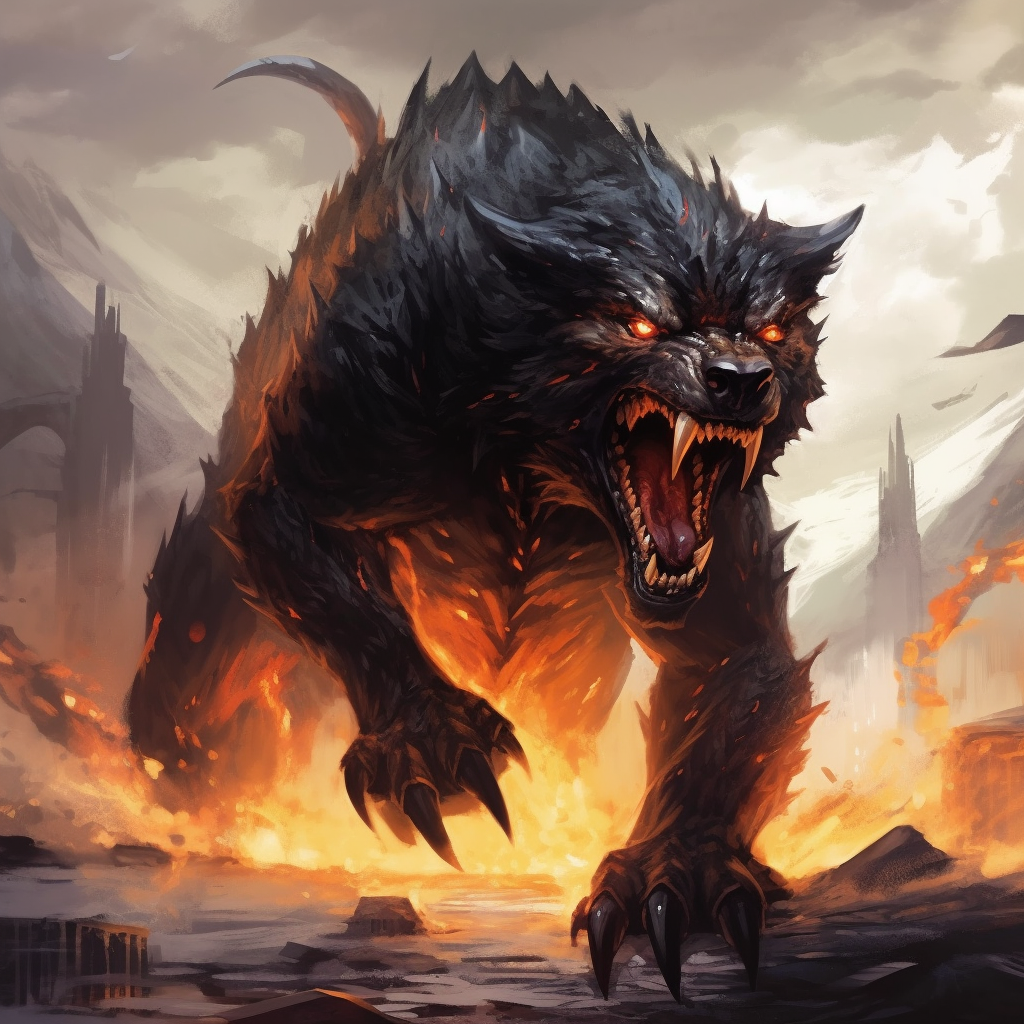
In the vast world of Norse mythology, few figures command attention and inspire intrigue quite like Fenrir, the great wolf. Unlike other creatures in myth who might symbolize protection or loyalty, Fenrir embodies raw power, defiance, and fate’s inevitable pull. He is not a character that lives within the bounds of simple good or evil but rather represents the untamed side of nature and destiny. His story is one of family betrayal, divine fear, and a fated end that will shake the very foundations of the world. But beyond his role as the “Doom of the Gods,” Fenrir offers deep lessons about freedom, strength, and the balance between order and chaos. So, what exactly can we learn from Fenrir’s legendary tale, and why does his story continue to resonate with us even today?
Fenrir’s Origins and His Early Life Among the Gods
Fenrir was not born to be ordinary. As the offspring of Loki, the god known for his cunning and chaos, and Angrboda, a giantess from Jotunheim, Fenrir’s lineage alone hinted at greatness—and danger. Fenrir wasn’t Loki’s only child; he had siblings who were also destined for extraordinary paths, including Hel, the ruler of the underworld, and Jormungandr, the massive serpent encircling Midgard. From his early days, Fenrir grew rapidly in strength and size, a trait that immediately caught the attention of the gods of Asgard. While Fenrir was still young, he was allowed to roam freely, and it was Tyr, the god of war, who courageously fed and interacted with him. Yet, as Fenrir grew, so did the gods’ fears about his potential and the destruction he could bring.
The gods’ decision to restrain Fenrir wasn’t born from cruelty alone—it was also an act of self-preservation. Odin, the Allfather, knew of the prophecies that foretold Fenrir’s role in Ragnarok, the end of days. According to the prophecy, Fenrir would break free from his chains and ultimately bring about the death of Odin himself. This knowledge weighed heavily on the gods, and rather than let Fenrir live unchecked, they made the choice to bind him. But as the gods discovered, containing such immense strength was no simple feat. They tried chain after chain, each stronger than the last, yet Fenrir broke through them all. Each attempt to restrain him only seemed to feed his power and his resentment, highlighting the lesson that the more you try to control something that is inherently wild, the stronger it becomes in its resistance.
The Symbolism of Fenrir’s Binding: Control Versus Freedom
The decision to bind Fenrir is a pivotal moment in Norse mythology, representing the conflict between control and freedom, order and chaos. After several failed attempts, the gods turned to the dwarves to craft Gleipnir, a magical ribbon that was both light and unbreakable, made from impossible ingredients like the sound of a cat’s footsteps and the roots of a mountain. Gleipnir held, but not without sacrifice. In exchange for Fenrir’s cooperation, the gods placed Tyr’s hand in Fenrir’s mouth as a sign of trust. When Fenrir realized he’d been tricked, he bit down, severing Tyr’s hand. This sacrifice and betrayal marked a turning point, sealing both Fenrir’s hatred toward the gods and his role as a symbol of unyielding force.
Fenrir’s binding can be seen as a lesson in the dangers of attempting to control what cannot, and perhaps should not, be contained. The gods, in their fear, attempted to bind fate itself. But in doing so, they unknowingly ensured the prophecy’s fulfillment. By trying to chain Fenrir, they intensified his resentment and ensured that when he eventually broke free, his wrath would be unstoppable. This dynamic between the gods and Fenrir is symbolic of the eternal struggle between freedom and control, a reminder that attempts to suppress what is powerful and wild can often lead to greater consequences. For more on the significance of Fenrir’s binding, check out our blog post on Fenrir’s Role in Norse Mythology.
Fenrir’s Role in Ragnarok: Embracing Destiny
Despite the gods’ best efforts, Fenrir’s role in Ragnarok was sealed. According to the prophecy, when the time came, he would break free from his chains and join the forces of chaos in the final battle against the gods. In this legendary battle, Fenrir was fated to kill Odin, the Allfather. This act would mark a climactic moment in the battle, signaling the end of an era. However, Fenrir’s story also comes with his own demise. After killing Odin, Fenrir himself is defeated by Vidar, Odin’s son, who avenges his father’s death. Fenrir’s actions during Ragnarok, his inevitable clash with the gods, and his death all serve as reminders of fate’s power. No matter how mighty the gods of Asgard were, they could not prevent the inevitable, and Fenrir’s journey is a testament to the forces of destiny that even divine beings cannot escape.
The lesson in Fenrir’s role in Ragnarok is one of acceptance. Rather than avoid fate, Fenrir embodies the courage to confront it head-on. In this sense, Fenrir symbolizes the inner strength needed to face life’s challenges, even those we cannot change. His story resonates as a reminder that some aspects of life, no matter how daunting, must be embraced. To delve deeper into Fenrir’s legendary role and influence, take a look at our article, What Makes Fenrir One of the Most Fascinating Beasts in Norse Legends.
Fenrir’s Legacy Today: A Symbol of Resilience and Strength
In modern times, Fenrir’s story has become a symbol of resilience, independence, and defiance. For many, he represents the spirit of those who resist control, who value freedom and face their destiny with strength and courage. Unlike other mythical creatures who may symbolize loyalty or peace, Fenrir stands as a reminder of the power that exists outside the boundaries of law and order. His legacy is one that resonates with those who see life as a journey to embrace one’s inner strength, even in the face of adversity. The fact that Fenrir could not be contained speaks to the human desire for freedom and self-determination, qualities that make his story as relevant now as it was in the age of the Vikings.
At Odin’s Glory, we celebrate Fenrir’s spirit through our Fenrir Viking Wolf Jewelry Collection. Each piece is designed to capture the essence of Fenrir’s strength and defiance, allowing wearers to carry his energy with them. Our collection includes pieces that not only represent Fenrir’s legendary power but also serve as a reminder to embrace one’s inner strength and resilience. Wearing Fenrir-inspired jewelry is a way to honor the spirit of the wild, untamable power that lives within us all.
Embracing the Lessons of Fenrir in Our Lives
So, what can we truly learn from Fenrir? His story teaches us the importance of strength, both in the face of control and in the acceptance of destiny. Fenrir embodies the notion that not all forces are meant to be restrained, and that sometimes the greatest power lies in embracing our true nature, free from fear or constraint. His defiance, resilience, and eventual acceptance of his role in the grand scheme of Norse mythology remind us to face our own lives with courage and confidence. Whether it’s standing up for our beliefs or finding the strength to confront life’s inevitable challenges, Fenrir’s legacy serves as a source of inspiration. His story teaches us that, like Fenrir, we are stronger than we know, capable of facing even the most daunting trials with courage and resilience.
Conclusion
Fenrir’s story may be ancient, but its message is timeless. From his unbreakable spirit to his destined role in Ragnarok, Fenrir symbolizes the power that lies in freedom, the strength that comes from resilience, and the courage to face fate head-on. If Fenrir’s legend resonates with you,
